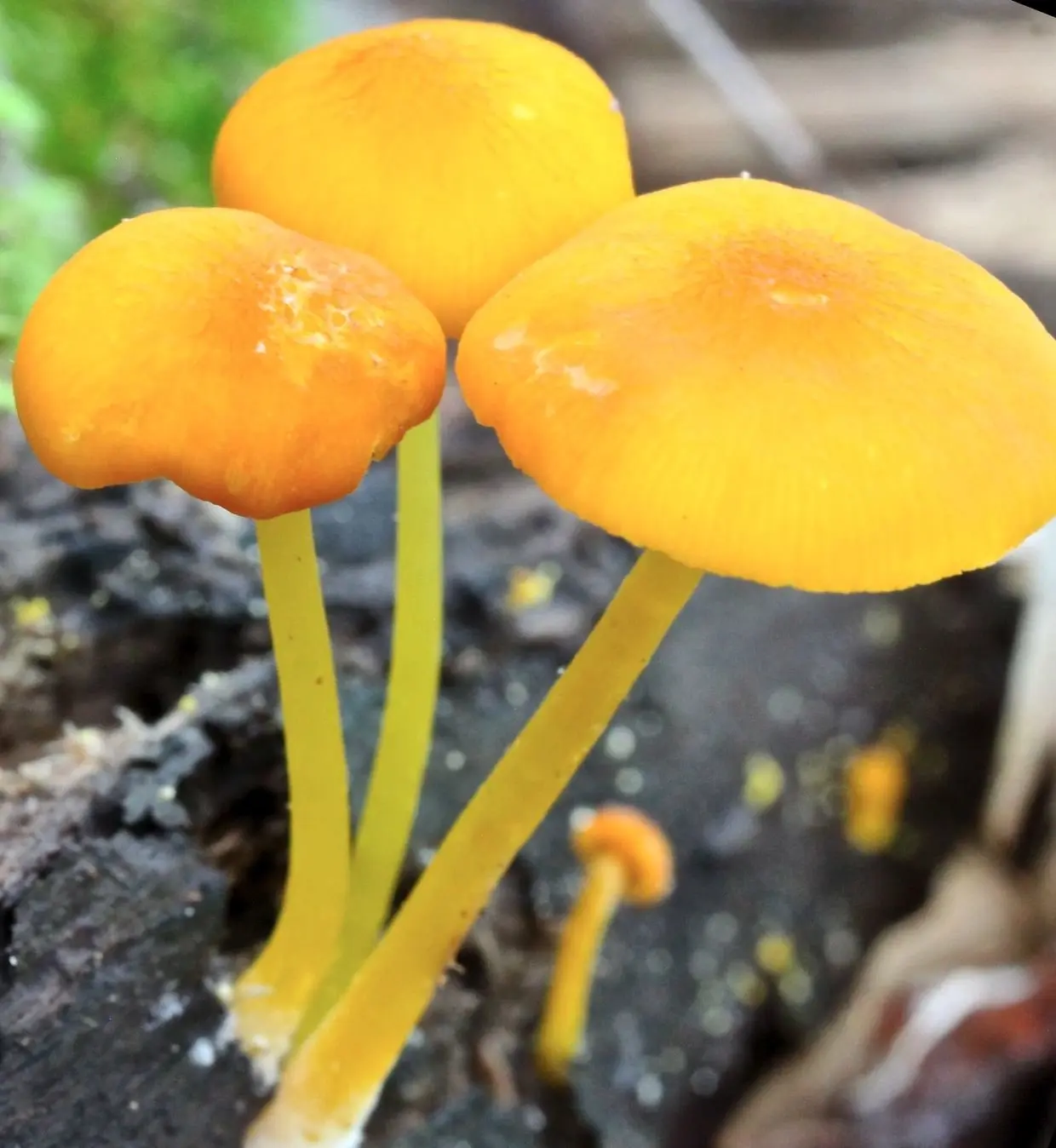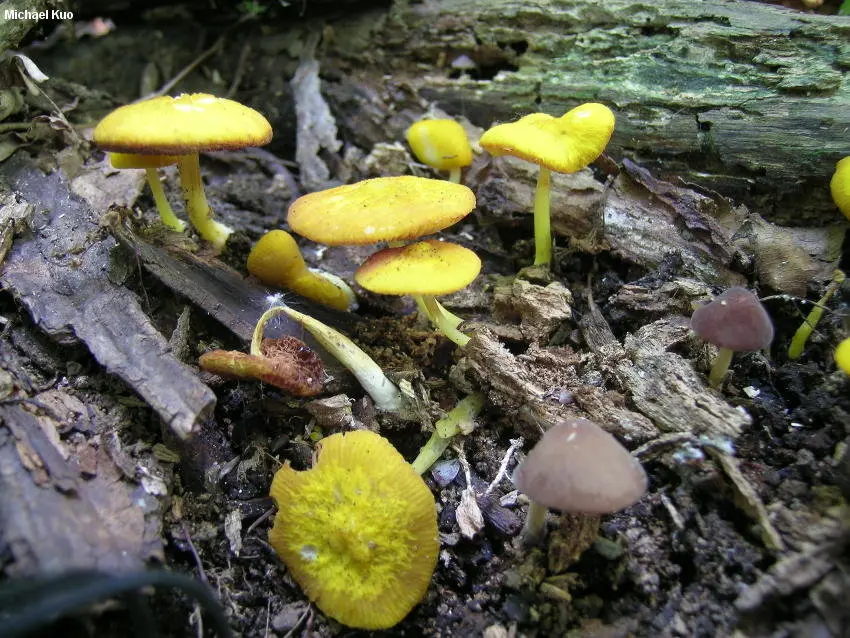Golden-veined whip (Pluteus chrysophlebius)
- Division: Basidiomycota (Basidiomycetes)
- Subdivision: Agaricomycotina (Agaricomycetes)
- Class: Agaricomycetes (Agaricomycetes)
- Subclass: Agaricomycetidae (Agaricomycetes)
- Order: Agaricales (Agaric or Lamellar)
- Family: Pluteaceae (Pluteaceae)
- Genus: Pluteus (Pluteus)
- Type: Pluteus chrysophlebius (Golden Veined Pluteus)
:

Ecology: saprophyte on the remains of hardwoods or, more rarely, conifers. Causes white rot. Grows singly or in small groups on stumps, fallen trees, sometimes on rotting wood submerged shallowly into the soil.
head: 1-2,5 centimeters in diameter. Broadly conical when young, becoming broadly convex to flat with age, sometimes with a central tubercle. Moist, shiny, smooth. Young specimens look a little wrinkled, especially in the center of the cap, these wrinkles are somewhat reminiscent of a vein pattern. With age, wrinkles straighten out. The edge of the cap may be finely ribbed. The color of the cap is bright yellow, golden yellow when young, fading with age, acquiring brownish-yellow tones, but does not go completely brownish, a yellow tint is always present. The cap margin appears darker, brownish due to the very thin, almost translucent flesh at the cap margin.
plates: free, frequent, with plates (rudimentary plates). In youth, for a very short time – white, whitish, when ripe, the spores acquire a pinkish color characteristic of all spores.
Leg: 2-5 centimeters long. 1-3 mm thick. Smooth, brittle, smooth. Whitish, pale yellow, with white cottony basal mycelium at the base.
Ring: missing.
Pulp: very thin, soft, brittle, slightly yellowish.
Smell: slightly distinguishable, when rubbing the pulp, it slightly resembles the smell of bleach.
Taste: without much taste.
spore powder: Pink.
Споры: 5-7 x 4,5-6 microns, smooth, smooth.
Grows from late spring to early autumn. Found in Europe, Asia, North America. It is possible that Plyutei golden vein is widespread throughout the globe, but it is so rare that there is no exact distribution map yet.
There is no data on toxicity. It is likely that P. chrysophlebius is edible, as are the rest of the Plyutei family. But its rarity, small size and very small amount of pulp are not conducive to culinary experiments. We also recall that the pulp may have a slight, but rather unappetizing smell of bleach.
- Golden-colored whip (Pluteus chrysophaeus) – a little larger, with the presence of brownish hues.
- Lion-yellow whip (Pluteus leoninus) – a whip with a bright yellow hat. Differs in much larger sizes. The cap is velvety, there is also a pattern in the center of the cap, however, it looks more like a mesh than a vein pattern, and in the lion-yellow spitter the pattern is preserved in adult specimens.
- Fenzl’s whip (Pluteus fenzlii) is a very rare whip. His hat is bright, it is the most yellow of all the yellow whips. Easily distinguished by the presence of a ring or ring zone on the stem.
- The orange-wrinkled scourge (Pluteus aurantiorugosus) is also a very rare scourge. It is distinguished by the presence of orange shades, especially in the center of the cap. There is a rudimentary ring on the stem.
There has been some taxonomic confusion with the golden-veined Pluteus, as with the golden-colored Pluteus (Pluteus chrysophaeus). North American mycologists used the name P. chrysophlebius, European and Eurasian – P. chrysophaeus. Studies carried out in 2010-2011 confirmed that P. chrysophaeus (golden-colored) is a separate species with a darker, more brown color of the cap.
With synonyms, the situation is also ambiguous. The North American tradition called “Pluteus admirabilis” a synonym for “Pluteus chrysophaeus”. Recent research confirms that “Pluteus admirabilis”, named in New York at the end of the 1859th century, is in fact the same species as “Pluteus chrysophlebius”, named in South Carolina in 18. Justo’s study recommends abandoning the name “chrysophaeus” altogether, as the original XNUMXth-century illustration of the species shows the mushroom with a brown, not yellow, cap. However, Michael Kuo writes about finding (very rarely) populations of brown-capped and yellow-capped Pluteus chrysophlebius growing together, photo:

and, thus, the question of “chrysophaeus” for North American mycologists is still open and requires further study.









